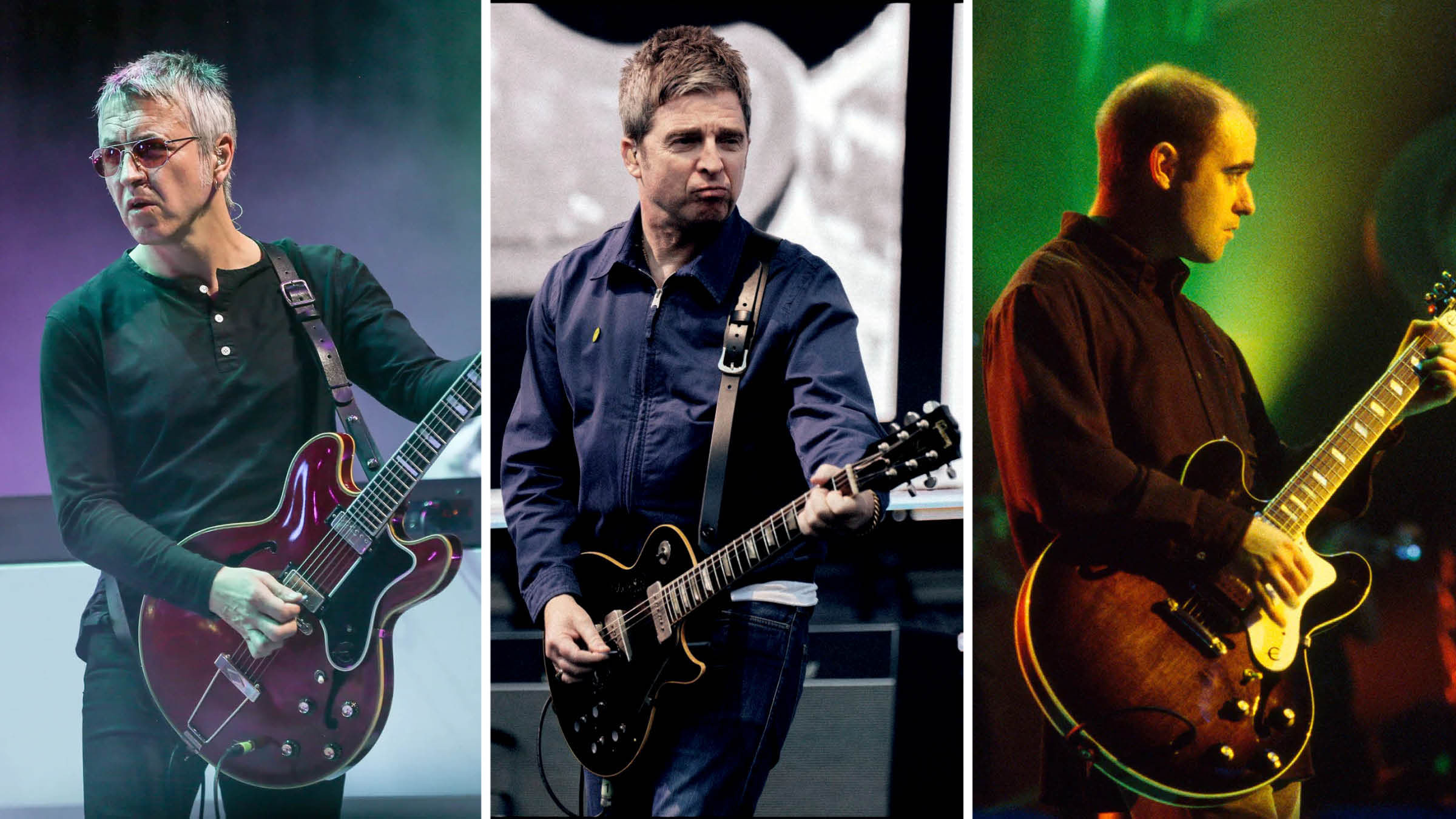“I pushed him towards the Les Paul. I can see him now, holding those notes. I don’t think he could have played those parts on any other guitar”: Mark Knopfler and Dire Straits’ inner circle look back on Brothers in Arms – their world-conquering “fluke”
Brothers In Arms reinvented Knopfler and gave him more fame than he could handle. 40 years on, in a rare interview, the band look back on the biggest rock album of the '80s
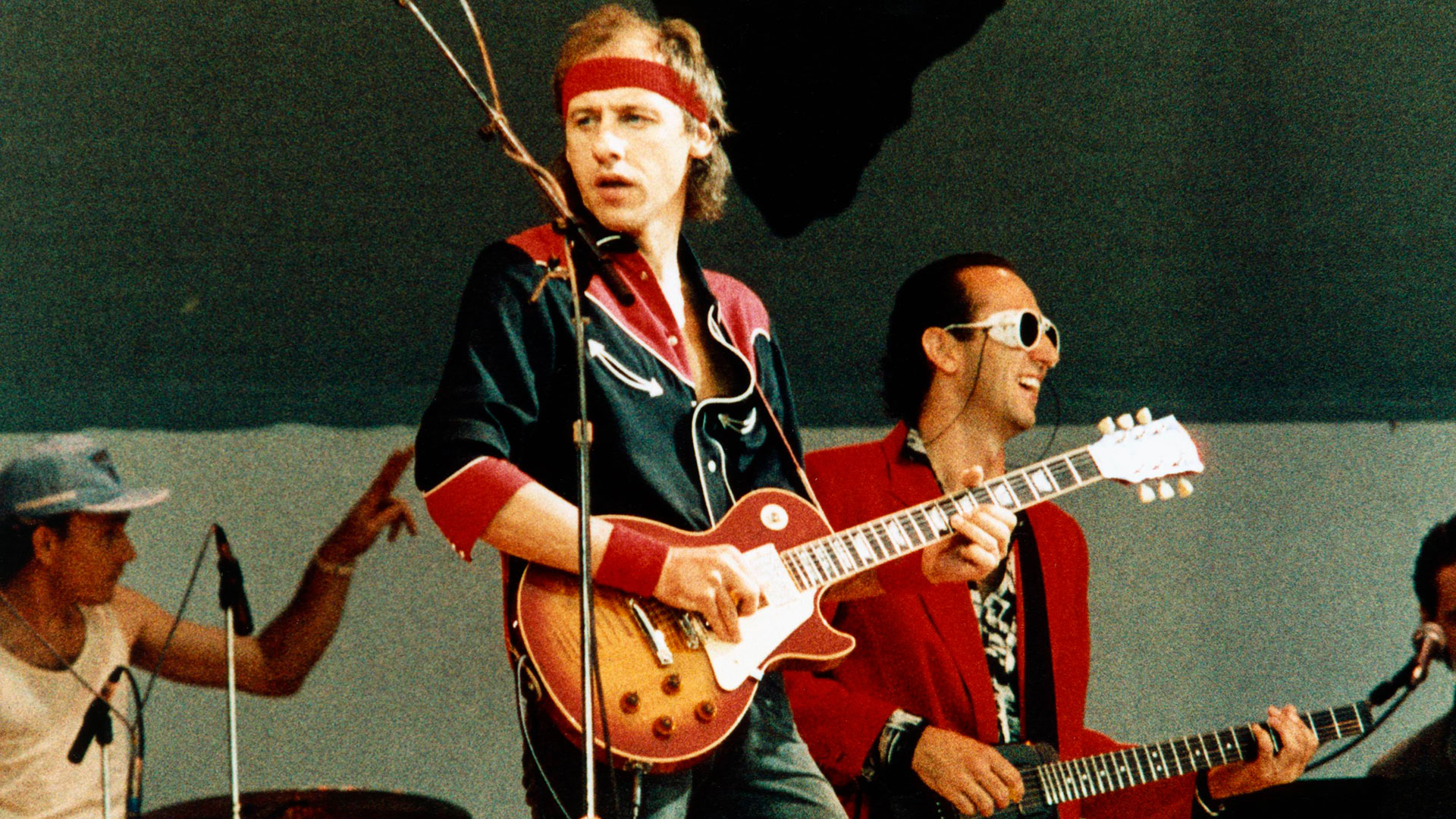
These days, Mark Knopfler tends to keep his distance from Brothers In Arms. Dire Straits’ all-conquering fifth album belongs to another time now, its songs to a 30-something gunslinger in a red headband whom the 76-year-old only half-recognises.
Before he quit the road, six years ago, he’d pull out the occasional track at solo shows, treating Madison Square Garden to a valedictory blast through Money For Nothing in 2019. But Knopfler – press-shy at the best of times – has never gone deep on the ’85 album that briefly made him the world’s biggest rock star, whether he liked it or not (hint: he didn’t).
“Brothers In Arms just happened to coincide with compact discs, and it was a sheer fluke,” he shrugged in a 1995 interview with Guitarist’s David Mead. “If it hadn’t been that album, it would have been something else. It was just an accident of timing…”
In the decades since then, Knopfler has kept his head down so doggedly on the subject of Brothers In Arms – while quashing talk of reuniting the band who split in ’95 – that it’s common to meet younger music fans who have never even heard of this 30-million-selling album.
But times change. Given the spending power of Dire Straits’ demographic, you’d anticipate a 40th anniversary Brothers In Arms reissue – and this year’s boxset is a stunner, complete with pin-sharp sleeve art of that airborne ’37 National resonator and a live disc of the band killing it in San Antonio.
Less expected is that Knopfler, his long-standing bassist and lieutenant, John Illsley – plus assorted members of the Straits’ inner circle – have agreed to promo interviews at the guitarist’s British Grove recording facility.
And so, on a warm day in West London, Guitarist is led into Studio 2, where Knopfler awaits, looking owlish behind thick-rimmed glasses, while nursing an espresso.
All the latest guitar news, interviews, lessons, reviews, deals and more, direct to your inbox!
Warming Up
Knopfler is reticent to start with, but we break the ice over a joke that only guitarists would get – the impossibility of playing in a chair with arms – and he’s off to the races, reaching back through the fog of four decades far more readily than we expected.
“It’s tempting just to say, ‘Oh, it’s nothing,’ and downplay it,” considers Knopfler, “but thinking about Brothers In Arms now, it seems like that record meant so much to so many people. I mean, that’s why we’re sitting here now…”
It wasn’t a million miles from here – just a short tube ride to Holland Park, in fact – that Brothers In Arms became a notion, recalls Illsley, speaking to us separately.
“We all got together in a little mews house, myself, Mark, Alan Clark [piano], Guy Fletcher [keys], and Terry Williams [drums] hitting a cardboard box. Mark slowly introduced us to the new songs, and it was a really good balance, from the seriousness of Brothers In Arms to the lightness of touch in Walk Of Life. What I’m doing on the bass, mostly, is complementing Mark’s thumb work on the low strings. And that goes right back to the first album.”
At first glance, the Brothers material shared little DNA. There was opener So Far Away, its warm lope offset by the space-age Synclavier that only Fletcher could wrangle.
There was the jazz-inflected, woman-done-me-wrong film-noir of Your Latest Trick, and the fusion of Knopfler’s rockabilly scuttle with a zydeco-inspired earworm on Walk Of Life. Among these, the clear standouts were the title track’s molten anti-war polemic and the deceptively tricksy riff of Money For Nothing.
“The lick is just a stomp, a two-fingered boogie,” says Knopfler of the song he wrote while listening to a New York TV store’s “bonehead” delivery man tear into the rock stars on the screens. “It’s just picking that pattern, and you mask off a lot of the notes, try to play the right ones. I was listening a lot to ZZ Top, things like Gimme All Your Lovin’. Boogie is a big part of where I’m from. You know, it almost comes from a fingerstyle perspective, just cranked up a little bit and smokin’ along.”
Illsley won’t stand for his bandleader’s modesty: “Money For Nothing is simple to play – but it’s not. It’s one of those odd things where everybody thinks, ‘Oh, anybody can play that.’ But actually, I’ve met very few guitarists who can play it the way Mark does. So that one stood out for me. The guitar lines that open Brothers In Arms are so subtle. You could think, ‘Is that it?’ but actually, it just worked so brilliantly with the chords.”
Listen to the aforementioned live disc and you’ll note that Knopfler rarely plays any lick by the book, endlessly tweaking the studio original. The opening to Brothers, he points out, was the only sacrosanct moment.
“It’s very interesting to me, the furniture of the title track. If you think about the first four notes I play on guitar: I’ve tried doing other intros live and they just don’t work. People have bought tickets and you can see them thinking, ‘That’s not Brothers In Arms.’ That’s not to say you have to play the part the same way every time. Once I’ve played those four notes, then I can start to improvise.”
By contrast, he says, most people miss the track’s nuances. “Because it’s quite deceptive. Each verse is slightly different from the one preceding it. These little variations are built into the song. I’ve heard classically trained musicians make the mistake of playing Brothers In Arms straight. You have to listen hard to figure out what’s different from the third verse to the second, and the second to the first. It might be just one ‘blue’ note, but it changes the way you feel.”
Something In The AIR
The material gave Dire Straits the confidence to book Montserrat’s AIR Studios in winter ’84. But there was trouble in paradise. Having shifted state-of-the-art digital gear down potholed roads to George Martin’s plantation-style recording facility, tropical rain hammered the roof for six weeks while Knopfler’s guitar tech of the period, Ron Eve, recalls producer Neil Dorfsman’s growing frustration.
“He was very unhappy because he felt there wasn’t enough work going on. And during that recording, he was complaining that all the sounds were too ‘dark’ – and I think he was talking about the guitar.”
Pre-Brothers, ‘dark’ was not a term you’d associate with Knopfler’s fretwork. By that point, Dire Straits’ 1978 hit Sultans Of Swing was still the band’s signature song, and its flittering outro solo – recorded with a ’61 Strat’s three-way pickup selector jammed between settings – perhaps the quintessential example of a Fender’s single-coil cluck.
Now, the ’61 made the trip to Montserrat, but Eve believes it mostly stayed in the flight case. “I think Mark got it out once or twice. But I think, with some of the superb instruments he had by then, he was finding that Fender – which was a bit of a partscaster – quite limiting.”
Instead, Brothers In Arms heralded the arrival of the 1983 Les Paul ’59 Reissue whose thick, burnished tone drove the title track, and Money For Nothing. Knopfler can’t recall exactly why he picked it up. “Maybe it was from listening to Need Your Love So Bad by Peter Green. And that wasn’t a distorted guitar sound, but it was so powerful.”
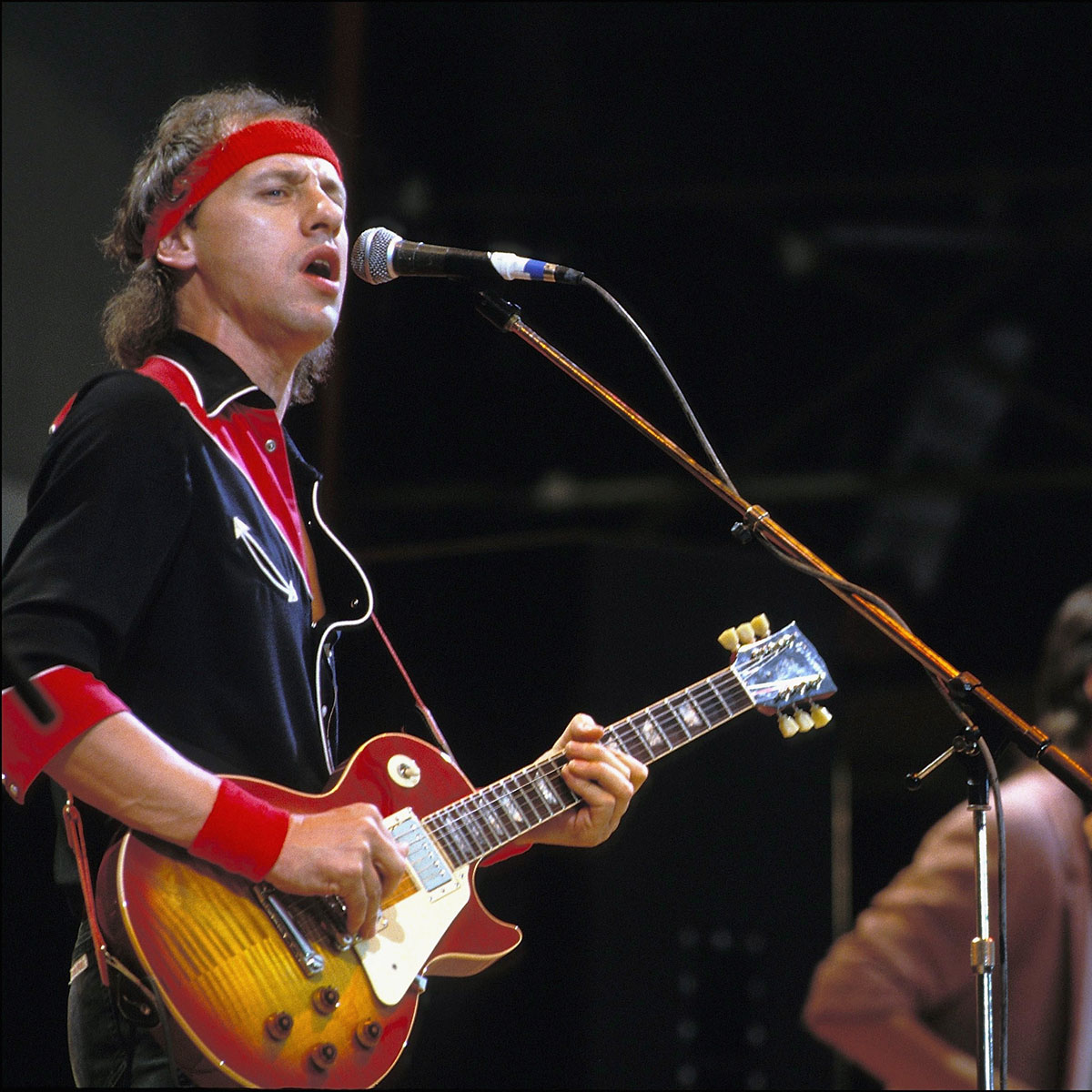
Eve fills us in on the model’s provenance: “That Les Paul came from Rudy’s Music in New York. I played it and the first thing I was conscious of was the neck. My comparison is always my own ’65 SG, with the really slick neck, and this wasn’t like that, but it wasn’t like the plank necks some Les Pauls have, either, which I can’t abide.
“After the recording, that reissue was also the one I converted the wiring on to do the out-of-phase pickups, going back to the Peter Green sound. I don’t think I even asked Mark!”
Illsley – running his trusty ’59 Precision, ’61 Jazz and black Wal through an Ampeg Portaflex – believes Knopfler’s gear choices and shifting style went hand-in-hand. “It’s strange to think of a word like ‘economical’,” he says of the title track’s lugubrious lead, its swollen sustained notes the antithesis to Sultans’ blurry bob ’n’ weave.
The Strat is almost like a ballet dancer, whereas the Les Paul has a lot of emotional weight to it
“The Strat is almost like a ballet dancer, whereas the Les Paul has a lot of emotional weight to it and seemed to be the absolute answer for Brothers In Arms, so it didn’t need 15 notes in a bar. It just needed two or three.”
Knopfler himself sees his Brothers lead work as a natural evolution. “My approach to solos was probably changing. You start to realise how much real estate there is in a bar – where you can put the notes or, if you have a band of that quality, where you can lean on the timing. But there wasn’t really time to think about it. You’re just moving on.
“The band had developed. It was a lot louder and more powerful, with keyboards becoming more important. That then makes you think in a different way – more inversions, perhaps. But I didn’t force it. I didn’t stop picking on country tunes. I was still doing rootsy things.”
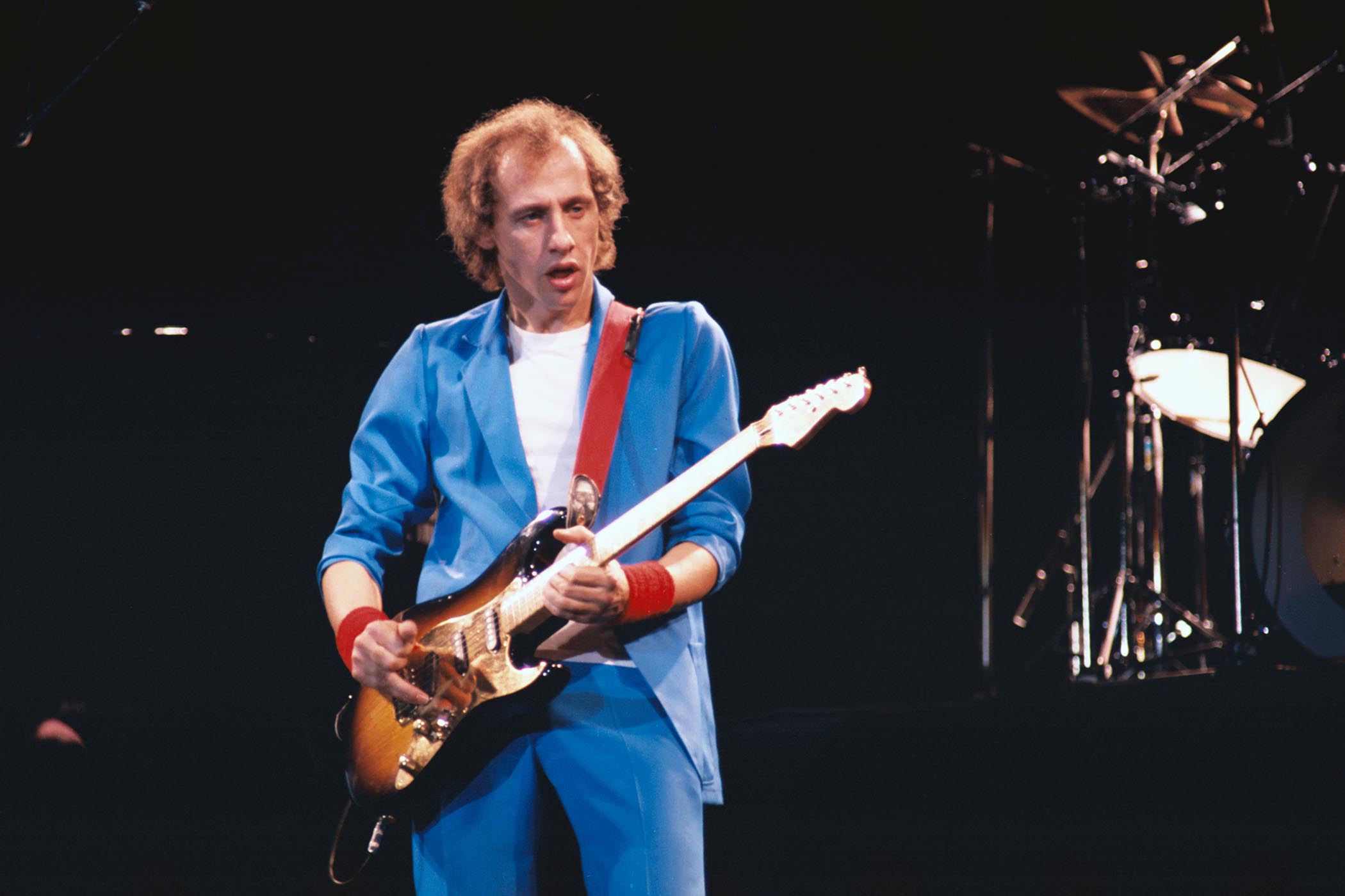
As he handed guitars to Knopfler across the studio floor, Eve was also noticing the Gibson’s impact. “Mark’s music had become more wide-ranging and moved away from the sound of the first two albums, which had that single-coil American sound, very clean, almost a surf-guitar sound, if you like.
“As he got into more complex arrangements, he knew the guitar sound needed to fit what he was playing. And Mark always loved that Les Paul tone, it just wasn’t really his style.
“It was up to him, of course,” Eve continues. “But I confess I pushed him more towards the Les Paul sound. I felt a resistance early on. But I persevered. He’d be on the neck setting with the tone rolled off, if I recall. Winding up the sustain. I can see him now, holding those notes. I don’t think he could have played those parts on any other guitar, quite frankly. A Strat couldn’t have done it at all. Not with all the pedals in the world.”
And The Rest
On the flipside, for other tracks, a Les Paul would have been dead wrong. The perky Walk Of Life demanded the articulation of Knopfler’s ’83 Tele-style Schecter (“That hunky, chunky Telecaster sound with that thumb-and-forefinger rockabilly rhythm,” says Eve. “There’s nothing like it, is there?”).
The old-west metallic pluck of The Man’s Too Strong proved the National wasn’t just eye candy (“It’s a lovely beast, that, and it’s made for exactly Mark’s style – you can either play those guitars or you can’t”). And contrary to the nagging rumour, a Les Paul Junior definitely didn’t feature on Money For Nothing (“No, rubbish. Mark has a Junior, but it certainly wasn’t involved on the recordings”).
Knopfler coaxed warmth and body from Eve’s own Marshall JTM45 (“I think I got the idea from the Bluesbreakers album”) into the studio’s Laney 4x12, with the Cry Baby on Money For Nothing representing the only significant pedal. But the sessions’ unsung gear curio, the tech points out, wasn’t even played by the bandleader.
“The Roland synth guitars of that time, someone like Mark would pick them up and say, ‘I’m not playing that.’ So he had one made, I’m pretty certain, by John Suhr. It was a beautiful guitar, but Mark never really mastered it. With his style, it was always going to be difficult. Because he’s such a light player; his fingers just brush the strings.
“Back then, with a synth guitar, you had to pick a single note, really precisely and monotonally, then pick the next. But because of how Mark played, with all the grace notes, the synth couldn’t keep up. So [New York sessioner] Jack Sonni played the parts on The Man’s Too Strong.”
That anomaly aside, Brothers indisputably belongs to Knopfler, these nine tracks representing the collision of his finest songs and most emotionally charged playing.
I was still learning how to play in time, after years of working in studios with engineers who would say, ‘You’re rushing there’
So it’s a strange thing to sit opposite one of the stone-cold British greats of the past half-century and hear him dismiss his own talent. The best Knopfler can say for his Brothers performance, he shrugs, is that he finally felt he was hitting his marks in the studio.
“Being called a guitar hero was just awkward. I gave up trying to be a great guitar player. I have enough to get by in the studio – that’s how I see myself as a player. Not much more than that. If you’re the one who wrote the songs, you’re kind of allowed to be crap. Well, not to be crap, but you’re given some leeway because you wrote the thing.
“[By Brothers In Arms] I was getting a little bit better,” he continues. “I was still learning how to play in time, after years of working in studios with engineers who would say, ‘You’re rushing there.’ And you’d say, ‘No, I’m not.’ And they’d say, ‘Yes, you are.’ Because you didn’t recognise it.
“You didn’t know it yet. You think you’re playing in time – but you’re not. You have to learn that. It takes a long time, especially if you’re playing eighth and 16th notes with your thumb and fingers. I got away with murder…”
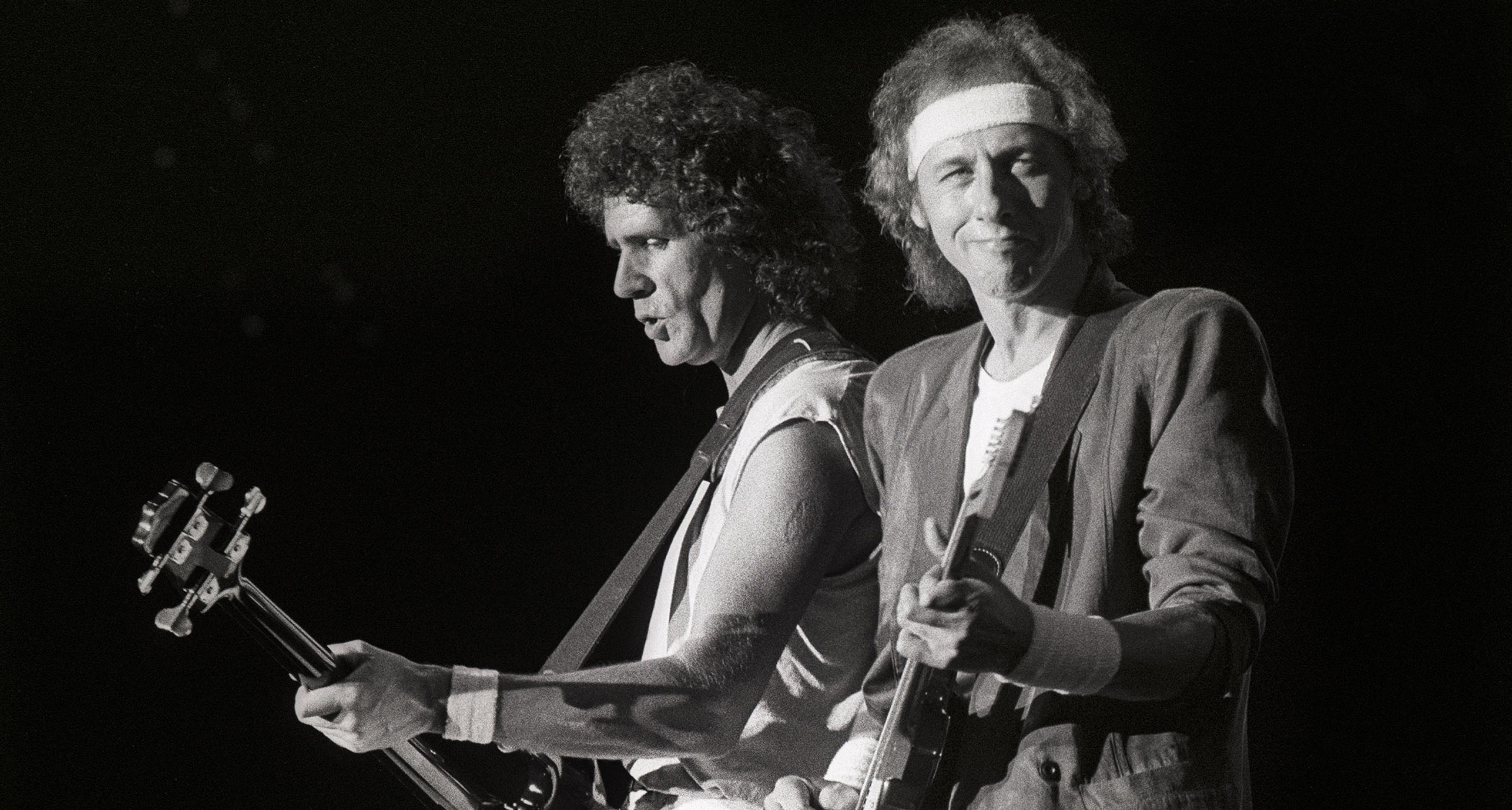
That’s not how the world saw it, of course. Released 17 May 1985, Brothers In Arms quickly became inescapable, while Knopfler’s fretwork enjoyed the kind of mass adulation that simply doesn’t happen in the diffused post-internet rock landscape.
Today, the guitarist and Illsley paint the world tour that followed as both enormous fun and intense graft. “It always sends a shiver down my spine when I think about it,” says the bassist. “The energy levels were just fabulous. There was nothing not to like about it.
“Of course, it’s bloody hard work,” he counters. “And we all realised Mark was getting most of the flak. Any sensible person doesn’t like the fame aspect because you can’t get a cup of coffee in Pret or go into a restaurant without someone saying, ‘Oh look, there’s so-and-so…’”
From the top
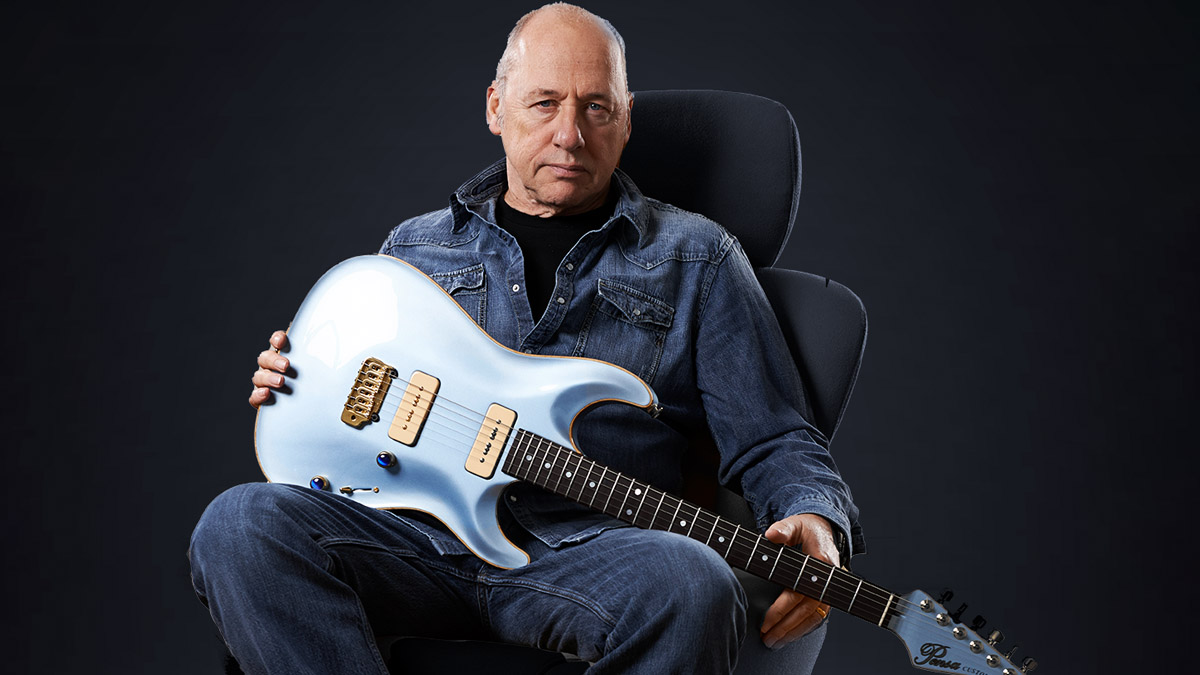
Today, Knopfler carries himself with such everyman humility, it’s hard to believe he was once a target for the gutter press.
“It was what we all wanted and had been chasing – I suppose you could also say the fallout was much bigger than anything we could ever have foreseen,” he says with a sigh. “There was one occasion when a youth in Manchester shouted out to me on the street, ‘You’re top, man.’ No, no, no. I didn’t feel as though I was top of anything. I never did.”
Knopfler’s manager enters the room: time’s up. 40 years later, then, has the guitarist made peace with the album that brought him both unimaginable success and intolerable scrutiny? Well, up to a point. Ask about the last time he listened to Brothers In Arms and the notion seems to fill him with horror. “Never, never, never. I don’t ever go home and play my own records. Life’s tragic enough without that adding to it…”
- Brothers in Arms: 40th Anniversary is out now via Mercury
- This article first appeared in Guitarist. Subscribe and save.
Jonathan Horsley has been writing about guitars since 2005, playing them since 1990, and regularly contributes to publications including Guitar World, MusicRadar and Total Guitar. He uses Jazz III nylon picks, 10s during the week, 9s at the weekend, and shamefully still struggles with rhythm figure one of Van Halen’s Panama.
You must confirm your public display name before commenting
Please logout and then login again, you will then be prompted to enter your display name.








